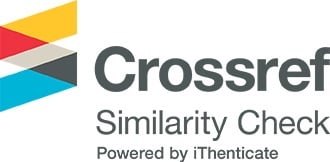Tổng quan về thuốc điều trị COVID-19 tiềm năng
Các tác giả
Từ khóa:
COVID-19, SARS-CoV-2, thuốc kháng virus, thử nghiệm lâm sàngTóm tắt
Sự bùng phát đại dịch COVID-19 được ghi nhận vào tháng 12 năm 2019 ở Trung Quốc và trở thành đại dịch lan rộng hơn 216 quốc gia, đã đặt ra một mối đe dọa chưa từng có đối với sức khỏe và nền kinh tế thế giới. Virus SARS-CoV-2 cho thấy sự tương đồng về bộ gen khoảng 79% với coronavirus gây hội chứng hô hấp cấp tính nặng (SARS-CoV) và khoảng 50% với virus hội chứng hô hấp Trung Đông (MERS-CoV). Giải pháp lâu dài mang lại lợi ích đáng kể là sử dụng thuốc để điều trị COVID-19 và các biến chủng nguy hiểm của nó. Do đó, một số loại thuốc đã được nghiên cứu về tính hiệu quả và an toàn trong điều trị COVID-19; hầu hết chúng đang được thử nghiệm lâm sàng. Bài viết này tóm tắt các nghiên cứu lâm sàng về các loại thuốc kháng virus tiềm năng được sử dụng như liệu pháp điều trị COVID-19. Điều này có thể giúp nhân viên y tế, các nhà nghiên cứu trong việc áp dụng các nguyên tắc này cho chẩn đoán, phòng ngừa, quản lý và điều trị căn bệnh gây ra đại dịch toàn cầu hiện tại.
Abstract
The outbreak of COVID-19 was recognized in December 2019 in China and as of October 5th, the pandemic had swept through 216 countries, thus posing an unprecedented threat to the world's health and economy. The new virus shared 79% and 50% genomic similarities with severe acute respiratory syndrome coronavirus (SARS-CoV) and the Middle East respiratory syndrome coronavirus (MERS-CoV), respectively. The long-term solution with significant benefits is the use of drugs to treat COVID-19 and its dangerous variants. Therefore, several drugs have been investigated for their efficacy and safety in the treatment of COVID-19; most of them are undergoing clinical trials. This article summarizes clinical investigations of potential therapeutic drugs used in COVID-19 therapy. This can help many individuals, researchers, or health workers in applying these principles for the diagnosis, prevention, management, and treatment of the current pandemic.
Tài liệu tham khảo
[1] S. A. Hassan, F. N. Sheikh, S. Jamal, J. K. Ezeh and A. Akhtar, “Coronavirus (COVID- 19): a review of clinical features, diagnosis, and treatment,” Cureus, vol. 12, pp. e7355, 2020.
[2] W. C. Ko, J. M. Rolain, N. Y. Lee, P. L. Chen, C. T. Huang, P. I. Lee, P. R. Hsueh, “Arguments in favour of remdesivir for treating SARS-CoV-2 infections,” Int. J. Antimicrob. Agents, vol. 55, pp. 105933, 2020.
[3] C. Wu, Y. Liu, Y. Yang, P. Zhang, W. Zhong, Y. Wang, Q. Wang, Y. Xu, M. Li, and X. Li, “Analysis of therapeutic targets for SARS-CoV-2 and discovery of potential drugs by computational methods,” Acta Pharm. Sin. B, vol. 10, pp. 766-788, 2020.
[4] C. Huang, Y. Wang, X. Li, L. Ren, J. Zhao, Y. Hu, L. Zhang, G. Fan, J. Xu and X. Gu, “Clinical features of patients infected with 2019 novel coronavirus in Wuhan, China,” Lancet, vol. 395, pp. 497-506, 2020.
[5] S. Pant, M. Singh, V. Ravichandiran, U. Murty and H. K. Srivastava, “Peptide-like and small-molecule inhibitors against Covid-19,” J. Biomol. Struct. Dyn., pp. 1-10, 2020.
[6] A. Riva, F. Conti, D. Bernacchia, L. Pezzati, S. Sollima, S. Merli, M. Siano, A. Lupo, S. Rusconi and D. Cattaneo, “Darunavir does not prevent SARS-CoV-2 infection in HIV patients,” Pharmacol. Res., vol. 157, pp. 104826, 2020.
[7] S. G. V. Rosa and W. C. Santos, “Clinical trials on drug repositioning for COVID-19 treatment,” Rev. Panam. Salud Públic, vol. 44, pp. e40, 2020.
[8] T. Qi, D. Limin, M. YanLing, W. Feng, H. Qi, M. Kaimin, X. Wenjing, X. Hui, Z. E. Z. Shujing, M. Pei, S. Siwei, L. YuMei, Z. Zilin, S. Yice, L. Zeyu, G. Wei, Y. Zengrong and J. Yang, “Is oseltamivir suitable for fighting against COVID-19: in silico assessment, in vitro and retrospective study,” Bioorg. Chem., vol. 104, pp. 104257, 2020.
[9]. R. U. Kadam and I. A. Wilson, “Structural basis of influenza virus fusion inhibition by the antiviral drug Arbidol,” Proc. Natl. Acad. Sci. U. S. A., vol. 114, pp. 206-214, 2017.
[10] C. Chen, J. Huang, Z. Cheng, J. Wu, S. Chen, Y. Zhang, B. Chen, M. Lu, Y. Luo and J. Zhang, “Favipiravir Versus Arbidol for COVID-19: A Randomized Clinical Trial,” 2020.
[11] Q. Cai, M. Yang, D. Liu, J. Chen, D. Shu, J. Xia, X. Liao, Y. Gu, Q. Cai and Y. Yang, “Experimental treatment with favipiravir for COVID-19: an open-label control study,” Engineering, 2020.
[12] J. A. Siordia, M. Bernaba, K. Yoshino, A. Ulhaque, S. Kumar, M. Bernaba, E. Bergin, “Systematic and statistical review of coronavirus disease 19 treatment trials,” SN Compr. Clin. Med., vol. 2, pp. 1120-1131, 2020.
[13] L. Zhang and R. Zhou, “Binding Mechanism of Remdesivir to SARS-CoV-2 RNA Dependent RNA Polymerase,” 2020.
[14] M. Wang, R. Cao, L. Zhang, X. Yang, J. Liu, M. Xu, Z. Shi, Z. Hu, W. Zhong and G. Xiao, “Remdesivir and chloroquine effectively inhibit the recently emerged novel coronavirus (2019-nCoV) in vitro,” Cell Res., vol. 30, pp. 269-271, 2020.
[15] K. T. Choy, A. Y. L. Wong, P. Kaewpreedee, S. F. Sia, D. Chen, K. P. Y. Hui, D. K. W. Chu, M. C. W. Chan, P. P. H. Cheung and X. Huang, “Remdesivir, lopinavir, emetine, and homoharringtonine inhibit SARS-CoV-2 replication in vitro,” Antivir. Res., vol. 178, pp. 104786, 2020.
[16] J. Grein, N. Ohmagari, D. Shin, G. Diaz, E. Asperges, A. Castagna, T. Feldt, G. Green, M. L. Green and F. X. Lescure, “Compassionate use of remdesivir for patients with severe covid-19,” N. Engl. J. Med., vol. 382, pp. 2327-2336, 2020.
[17] J. Wu, J. Liu, X. Zhao, C. Liu, W. Wang, D. Wang, W. Xu, C. Zhang, J. Yu and B. Jiang, “Clinical characteristics of imported cases of COVID-19 in jiangsu province: a multicenter descriptive study,” Clin. Infect. Dis., vol. 71, pp. 706-712, 2020.
[18] Y. Song, M. Zhang, L. Yin, K. Wang, Y. Zhou, M. Zhou and Y. Lu, “COVID-19 treatment: close to a cure? - A rapid review of pharmacotherapies for the novel coronavirus,” Int. J. Antimicrob. Agents, vol. 56, pp. 106080, 2020.
[19] S. Jang and J. Y. Rhee, “Three cases of treatment with Nafamostat in elderly patients with COVID-19 pneumonia who need oxygen therapy,” Int. J. Infect. Dis., vol. 96, pp. 500-502, 2020.
[20] B. Cao, Y. Wang, D. Wen, W. Liu, J. Wang, G. Fan, L. Ruan, B. Song, Y. Cai and M. Wei, “A trial of lopinavir-ritonavir in adults hospitalized with severe Covid-19,” N. Engl. J. Med., vol. 382, pp. 1787-1799, 2020.
[21] N. Yamamoto, S. Matsuyama, T. Hoshino and N. Yamamoto, “Nelfinavir inhibits replication of severe acute respiratory syndrome coronavirus 2 in vitro,” BioRxiv., 2020.
[22] FDA, “Coronavirus (COVID-19) update: FDA authorizes additional oral antiviral for treatment of COVID-19 in certain adults,” December 23, 2021. [Online]. Available: https://www.fda.gov/news-events/press-announcements/coronavirus-covid-19-update-fda-authorizes-additional-oral-antiviral-treatment-covid-19-certain.
[23] Pfizer, “Fact sheet for healthcare providers: emergency use authorization for Paxlovid™,” December 10, 2021. [Online]. Available: https://labeling.pfizer.com/ShowLabeling.aspx?id=16474.
[24] FDA, Coronavirus disease 2019 (COVID-19) Emergency Use Authorization (EUA) information,” June 13, 2022. [Online]. Available: https://www.fda.gov/emergency-preparedness-and-response/mcm-legal-regulatory-and-policy-framework/emergency-use-authorization #coviddrugs.
Tải xuống
Tải xuống: 99







